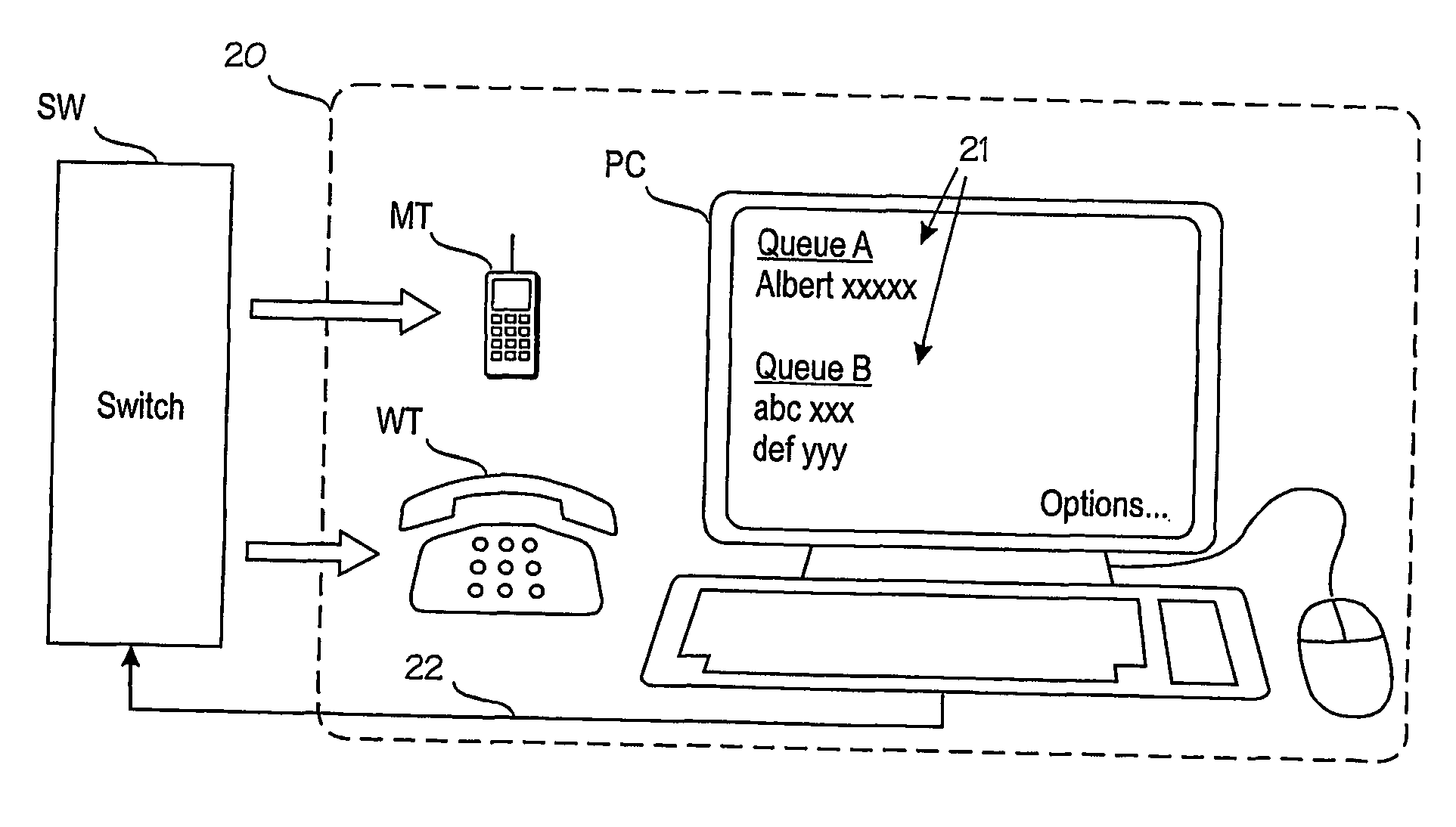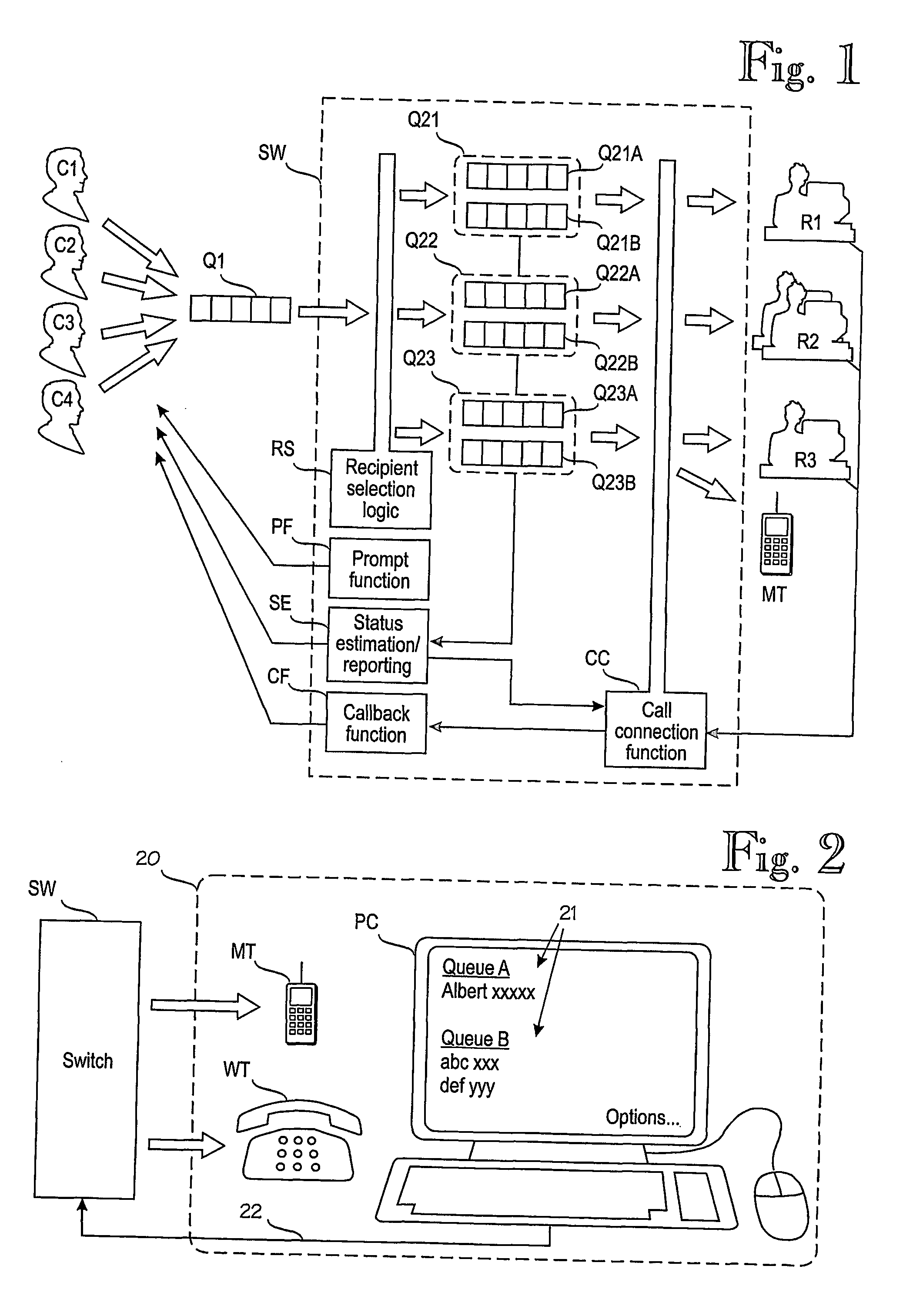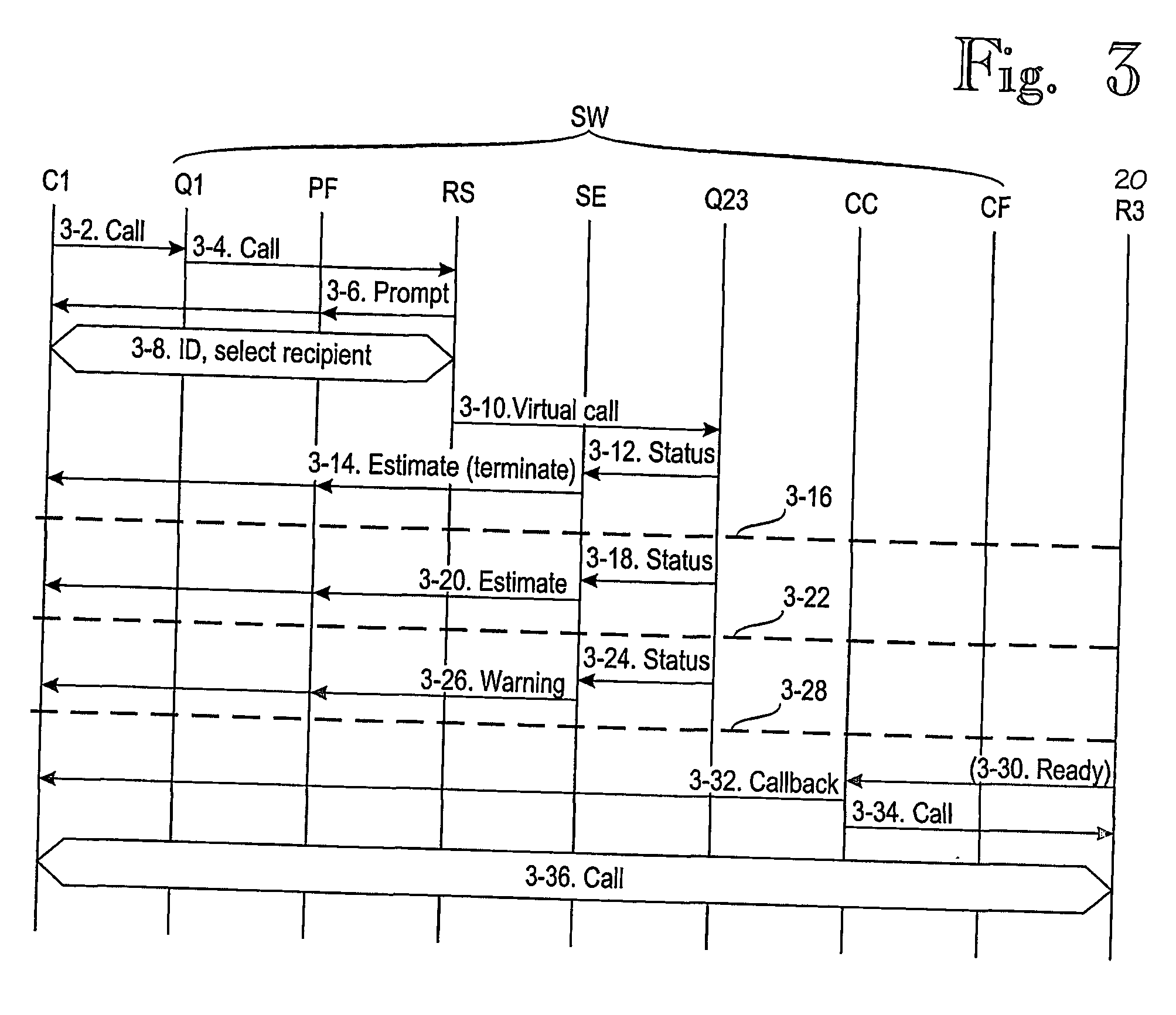Mechanism for queuing calls
- Summary
- Abstract
- Description
- Claims
- Application Information
AI Technical Summary
Benefits of technology
Problems solved by technology
Method used
Image
Examples
Embodiment Construction
[0020]FIG. 1 is a block diagram illustrating the major elements of the invention. Reference signs C1 to C4 denote four clients or callers. Reference sign Q1 denotes the first queue system in which the clients' calls are placed before propagating to a switch SW. In a typical embodiment the switch SW is a computer-controlled telephone switchboard. Reference signs R1 to R3 denote three recipients that ultimately process the clients' calls. Since FIG. 1 is mostly a logical block diagram, the reference signs C1 to C4 and R1 to R3 denote the clients and recipients both as terminals and as the persons using them. It is apparent from the context whether the discussion relates to the person or the terminal. The switch SW is controlled by a recipient selection logic RS. The recipient selection logic RS may be entirely human-operated, entirely computerized or a hybrid of the two. An example of a hybrid utilizes a prompt function PF, such as an interactive voice response (IVR) unit as follows. ...
PUM
 Login to View More
Login to View More Abstract
Description
Claims
Application Information
 Login to View More
Login to View More - R&D Engineer
- R&D Manager
- IP Professional
- Industry Leading Data Capabilities
- Powerful AI technology
- Patent DNA Extraction
Browse by: Latest US Patents, China's latest patents, Technical Efficacy Thesaurus, Application Domain, Technology Topic, Popular Technical Reports.
© 2024 PatSnap. All rights reserved.Legal|Privacy policy|Modern Slavery Act Transparency Statement|Sitemap|About US| Contact US: help@patsnap.com










